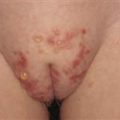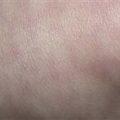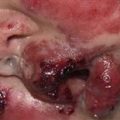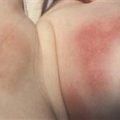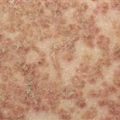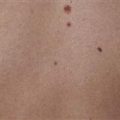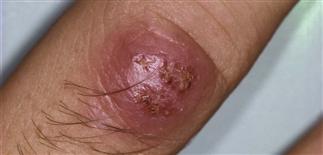
M. marinum infection. Red nodule from finger of teen from fish aquarium.
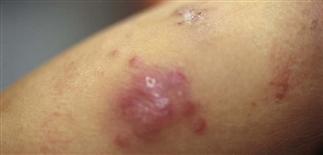
M. marinum infection. Multiple red nodules on child’s leg from swimming pool abrasion and infection.
CLINICAL FEATURES
With the decrease in tuberculosis of skin, nontuberculous mycobacterial infections are more likely to be seen. These uncommon infections present as persistent red nodules or ulcerated nodules. The most frequent is M. marinum obtained from fish aquariums or swimming pools. Others reported include M. fortuitum, M. kansaii and M. chelonae. All require a wound to enter the skin. Some will infect bone and lung as well. Otherwise healthy children can be infected but immunosuppressed children or the child with cancer will be especially susceptible.
In mild infections spontaneous clearing in 4 months may be expected.
Large or ulcerated lesions require systemic antimicrobial agents.
TREATMENT
Antituberculous drugs such as the combination of ethambutol 15 mg/kg/day in children over 5 years of age plus rifampin may be effective. In vitro sensitivity testing may not correlate with the clinical response.
Clarithromycin plus rifampin has been successful and fluoroquinolones have been also useful in some.

